Nombre:
Dizang de la Montaña Jiuhua
Otro:
Localización:
Ver mapa más grande
Récord: 76 m
Tipo: Estatuas
Categoría: Ksitigarbha
Foto:
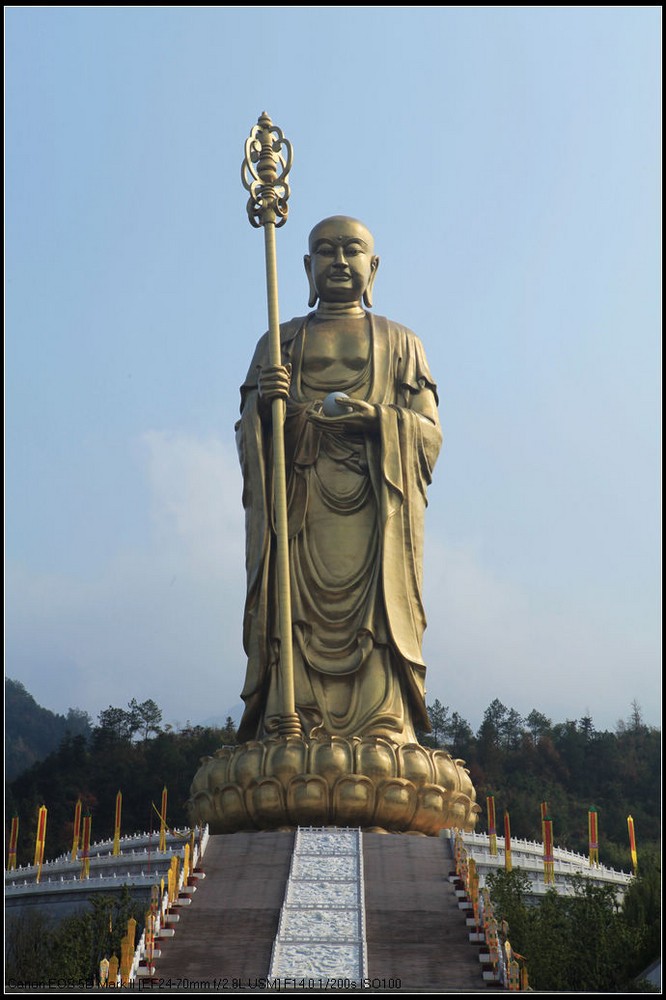
Voto:
Continente: Asia
País: China
Localización: Qingyang County
Año: 2012
Estado: Terminado
Descripción:About Jiuhua Mountain Temple Fair
The Jiuhua Mountain temple fair can be traced back to the Tang Dynasty. According to legend, in the late Kaiyuan year of Tang Dynasty, monk Jin Qiaojue from Silla country (now South Korea) arrived at the mountain to set up a Dizang (or Earth Store) Bodhisattva monastery.
After 75 years of ascetic practices and meditations of the Dharma, he passed away at the age of 99 on July 30 of the lunar calendar. His dead body was put in a vat for three years yet remained uncorrupted. His body remained intact and his joints sounded like a gold lock when shaken.
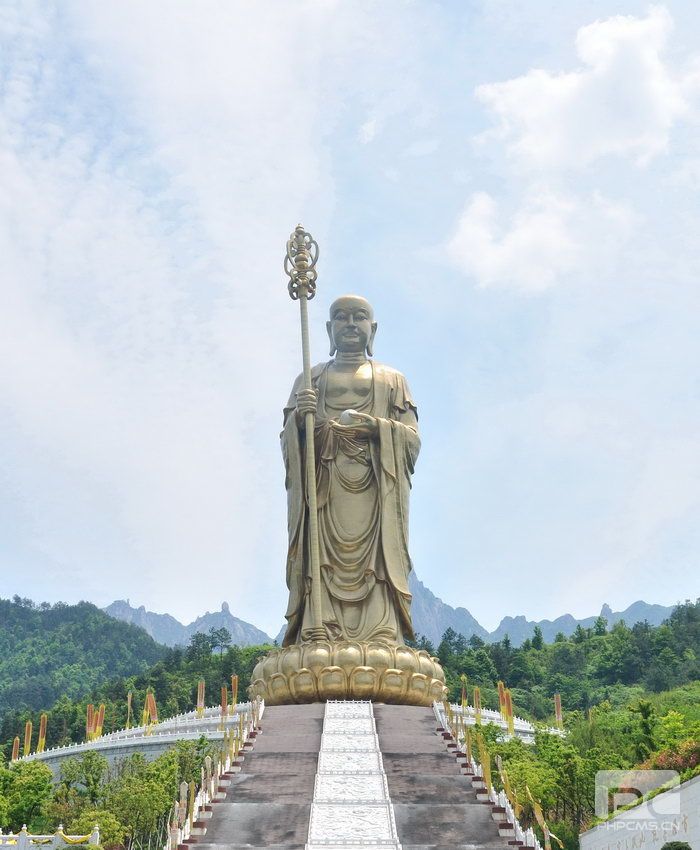
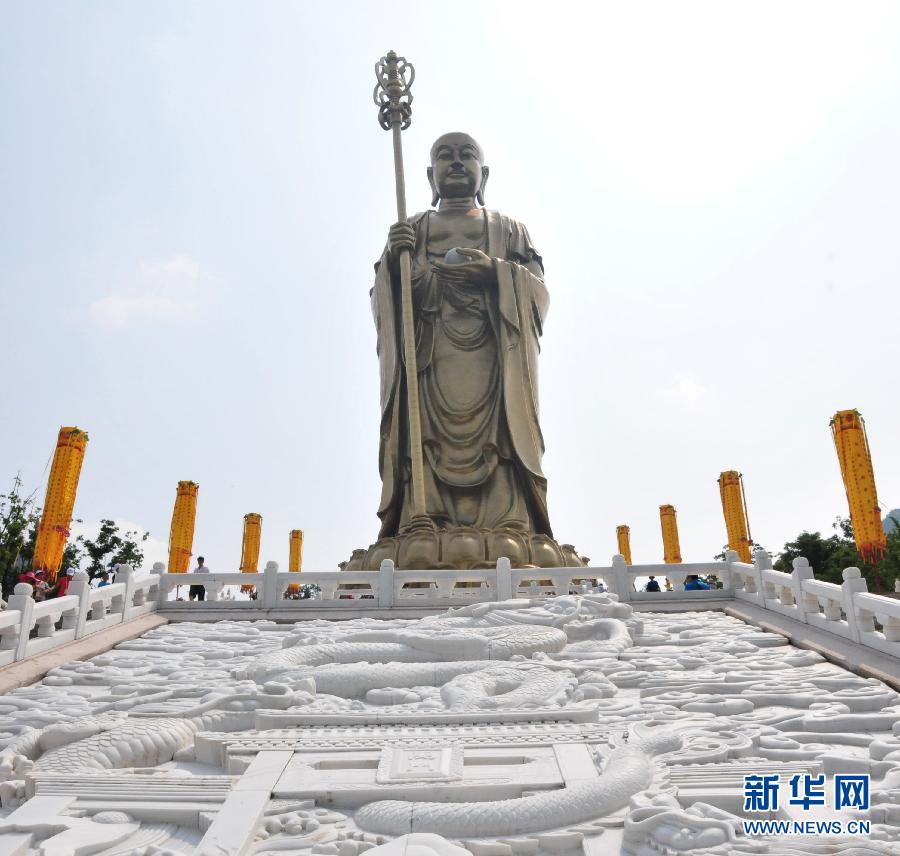
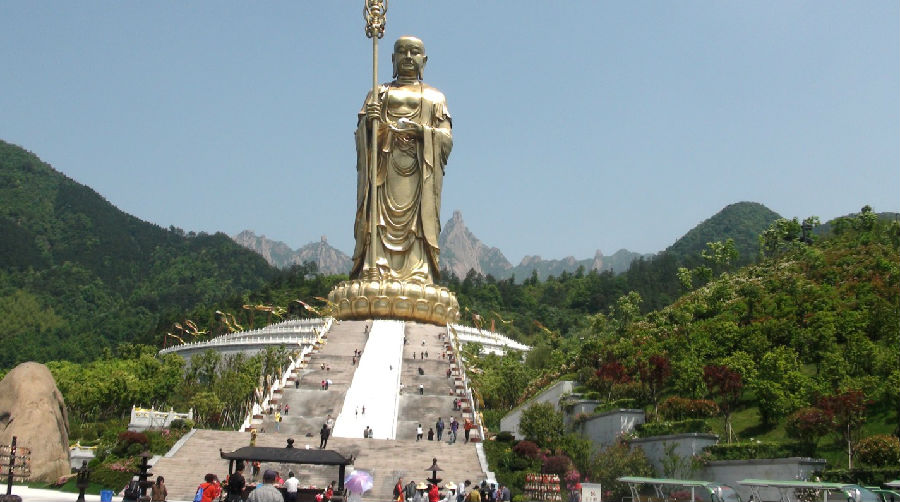
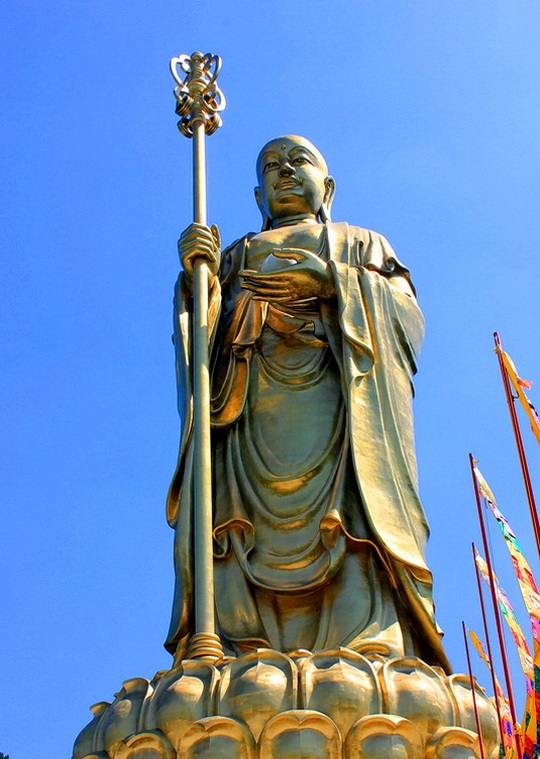
According to Buddhist scriptures, the sound of a gold lock from a corpse means Buddha’s reincarnation. Therefore his disciples honored him as the gold Dizang, believing he was the reincarnated Dizang Bodhisattva. They then built a pagoda for his flesh in Shenguan Ridge of Jiuhua Mountain to worship him.
Every year on July 30 of the lunar calendar, believers and pilgrims from around the world would go on a pilgrimage to offer incenses and to worship the pagoda as well as the Heavenly Terrace. Meanwhile, many villagers and craftsmen also took the occasion to do business whilst folk artists gave performances, which has gradually shaped the traditional Jiuhua Mountain temple fair.
Grand celebrations are held at each fair at Jiuhua Mountain. The temples in the mountain, big or small, one after another, hold Buddhist services such as "the Bodhisattva Figure Consecration ", "Temple Abbot Appointment" and "DaDizangQi (seven-day dharma study and practices)", “DaFoQi (seven-day Buddhist services)" and “Land-water Dharma Assembly". This is where the sounds of chanting fill the mountain air, an unprecedented scene that mustn’t be missed. A spectacular ceremony to observe the flesh is also held where monks chant while circling the pagoda throughout the day and night ablazed in lights.
The temple fair was once prohibited during the Cultural Revolution. In 1978, the "Dizang Dharma Assembly and the alternative “Prayer Meeting for World Peace” were restored. Since 1983, Jiuhua Mountain Management Office (now the Management Committee), and Jiuhua Mountain Buddhist Association have started to co-host the temple fair which combines Buddhist activities with tourism, trade and commerce. The fair has gradually become a distinctive festival with local characteristics.
As early as the 1990s, the temple fair was listed by the National Tourism Administration as one of China’s major tourism festivals. In 2006, "Jiuhua Mountain Traditional Temple Fair" was included in the list of "Intangible Cultural Heritage of Anhui Province." It is now a well-known and influential event both at home and abroad.
(chinadaily.com.cn)
http://anhui.chinadaily.com.cn/travel/2011-08/11/content_13093487.htm
99 meter, US$42m Buddhist statue finished on holy China mountain
Staff Reporter
2012-08-23
09:25 (GMT+8)
A giant statue of Ksitigarbha, a saint within the Buddhist tradition, now sits completed atop Mount Jiuhua in eastern China's Anhui province and will open to the public in September.
The statue, which has taken 20 years to finish, is mainly composed of copper with 35 kilograms of gold on its face, reports our sister newspaper China Times.
The 99-meter statue cost 300 million yuan (US$42 million) to complete. It has been described by China's media as a future landmark of one of the country's four sacred mountains. The other three are Mount Wutai in Shanxi province, Emei in Sichuan province, and Putuo in Zhejiang province.
It is made up of 3,000 copper panels and contains three elevators that can carry people to the top of the statue.
The statue is part of the mountain park's cultural construction project that will be completed by the end of August. The park is expected to become a tourist attraction and a Buddhist shrine.
The cost of the statue has drawn some negative comments from internet users. One netizen said that Buddha would be angry with the cost if he really exists. Another netizen said a real shrine does not need an expensive statue to become famous. Still another said that if the money were spent in the true Buddhist spirit, it would be spent on improving people's lives instead.
http://www.wantchinatimes.com/news-subclass-cnt.aspx?id=20120823000053&cid=1103
Many of the mountain's shrines and temples are dedicated to Ksitigarbha (known in Chinese as Dìzàng, Chinese: 地藏, in Japanese as Jizo ), who is a Bodhisattva and protector of beings in Hell Realms according to Mahayana Buddhist tradition. Pious Buddhists often visit Anhui to climb to Greater Tiantai peak, which is regarded as Jiuhuashan's most important peak, although it is not the tallest.
http://twilightzone518.blogspot.com.es/2013/06/dizang-wang-temple-mount-jiuhua.html
http://www.huangshantour.com/english/SmallClass.asp?typeid=16&BigClassID=20&smallclassid=27
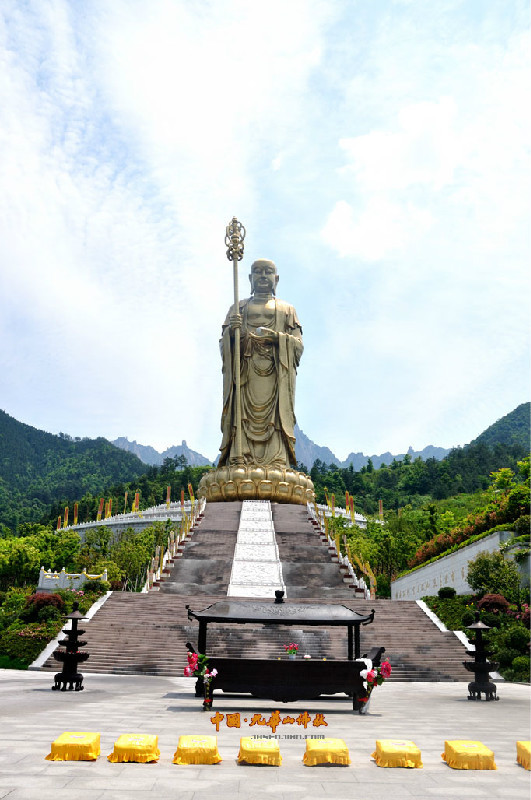
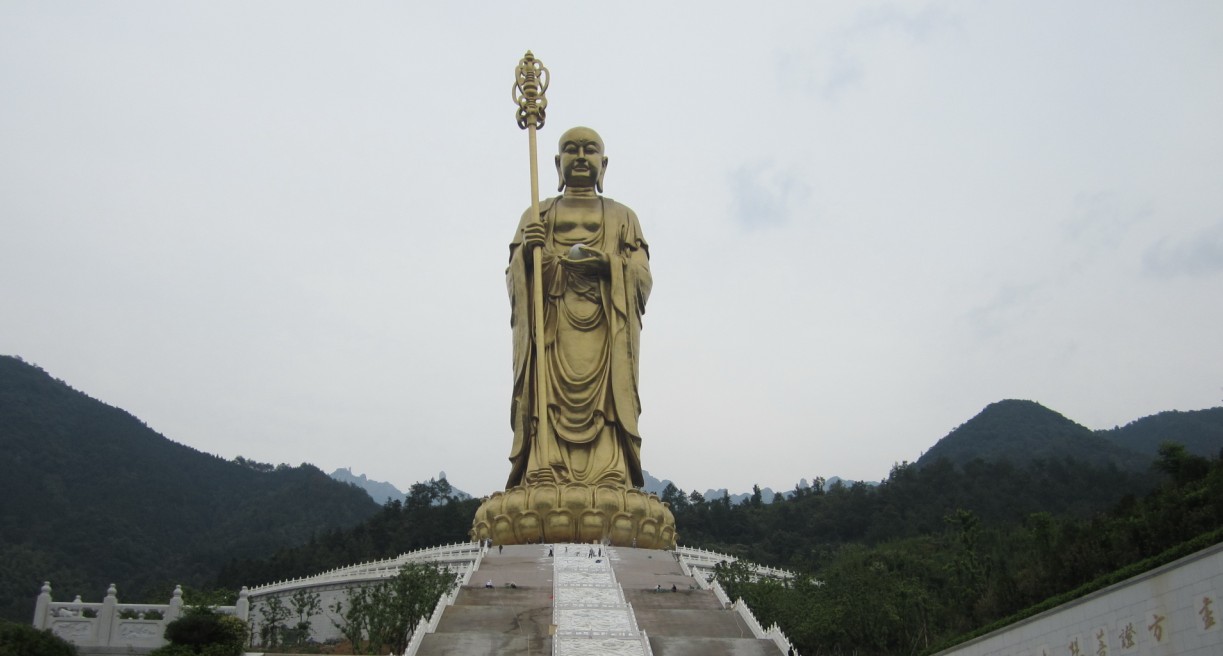
Ksitigarbha es un bodhisattva muy venerado por los budistas de la China y Japón.
Se le rinde honor desde el siglo IV a. C. en la India, volviéndose popular en China con el nombre de Dìzàng y en Japón como Jizō. Es adorado como el patrón de los oprimidos y los moribundos, deidad que intenta salvar a las almas condenadas al infierno.
Se le considera el bodisatva que ayuda a salir del infierno a los seres que por sus acciones han renacido en él, en Japón también se destaca por su bondad para con los difuntos, también se le ve como protector de los niños pequeños y de los viajeros. Generalmente se le caracteriza como un monje con un halo alrededor de su cabeza calva, llevando consigo un báculo con el que abre las puertas del infierno y una perla resplandeciente con que ilumina las tinieblas.
http://es.wikipedia.org/wiki/Ksitigarbha
http://www.360doc.com/content/12/0201/16/2280746_183430953.shtml
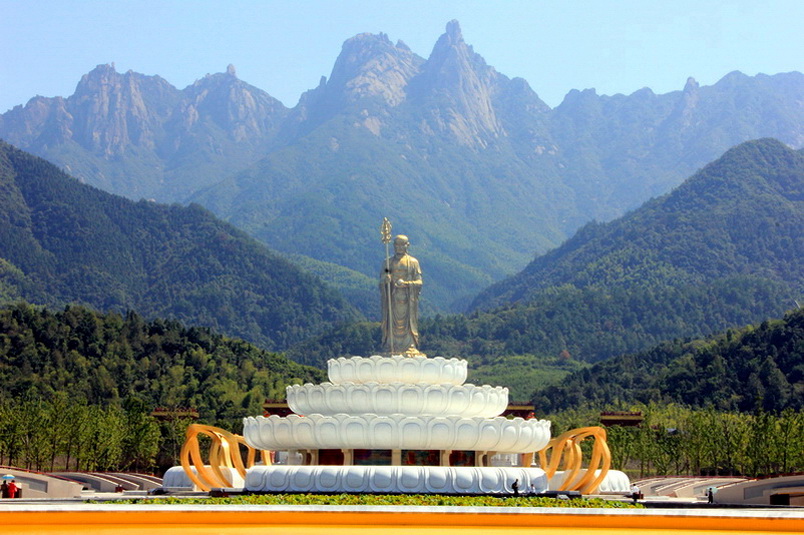
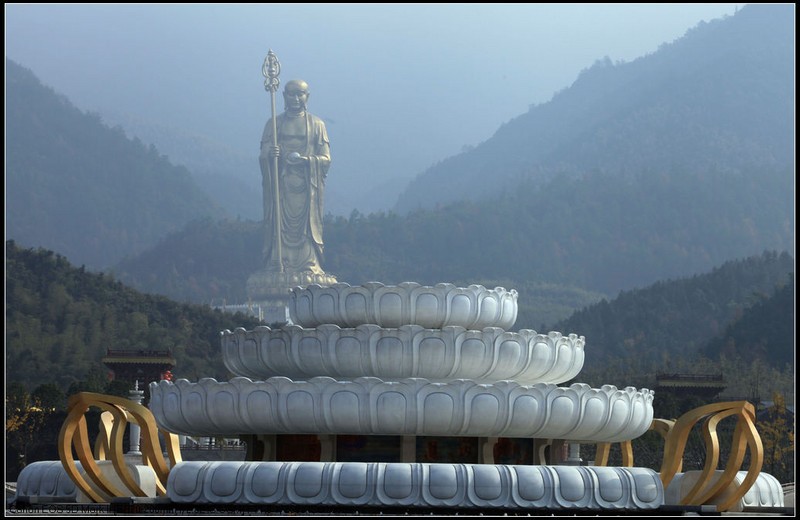
Vídeo:
Contador: 9232
Inserción: 2013-09-17 13:18:11
Lugares a visitar en un radio de 100 km (en línea recta)
Mapa de los lugares a 100 km (en línea recta)
Mostrando Registros desde el 1 hasta el 0 de un total de 0
Visitas |
Más visitados Basílica de San Marcos 154978 Catedral de Notre Dame (París) 144286 Torre de Pisa 131633 Monte Saint-Michel 100727 Presa de las Tres Gargantas 81584 |
Incorporaciones |
Comentarios hazola Cúpula de la Roca gracias me... gera Buenos Aires las mejores fotos de la mejor ciudad del... Daniel M. - BRASIL San Francisco ... PEQUE Presa Chicoasén SERA QUE ALGUIEN ME PUEDE DAR MAS INFORMACIÓN DE ESTE PROYECTO ESTUDIO EN LA UNACH Y ES PARA UN... Mery Huaca Pucllana Muy interesante, muy buena la información y... |
 Tweet
Tweet


